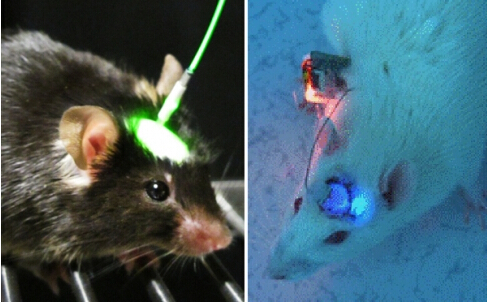Chinese researchers have developed the first wearable device that can control neuron activities in mice with light, to help in research into cures for common brain disorders such as Parkinson’s disease and epilepsy.
 |
|
The new device (right), does away with the need for a cable that impedes movement (left). Photos: SCMP pictures | Known as optogenetics, the science involves planting light-sensitive genes in specific neurons so they can be switched on and off under different colours of light. It was first explored in the early 2000s.Optogenetics has helped scientists identify the neurons in charge of face recognition on monkeys and restore vision in blind mice. It was a major advance on the previous technique of using electrical pulses, which were unable to distinguish between different types of neurons with distinct functions, preventing precise understanding and control of brain activities. In the latest advance, Professor Wang Shouyan and a team from the Chinese Academy of Sciences Suzhou Institute of Biomedical Engineering and Technology created a device that can be worn by mice, doing away with the need for a cable connecting the animal’s head with a large control box that had hampered movement. The portable optogenetics stimulator weighs only 3.3 grams and does not impede a laboratory mouse’s activities, according to a press release on the academy’s website. The stimulator has a wireless communication module to stream data to and from a computer with a range of 10 metres, and scientists can control the device remotely to manipulate and better understand the mouse’s brain activities. (South China Morning Post) |